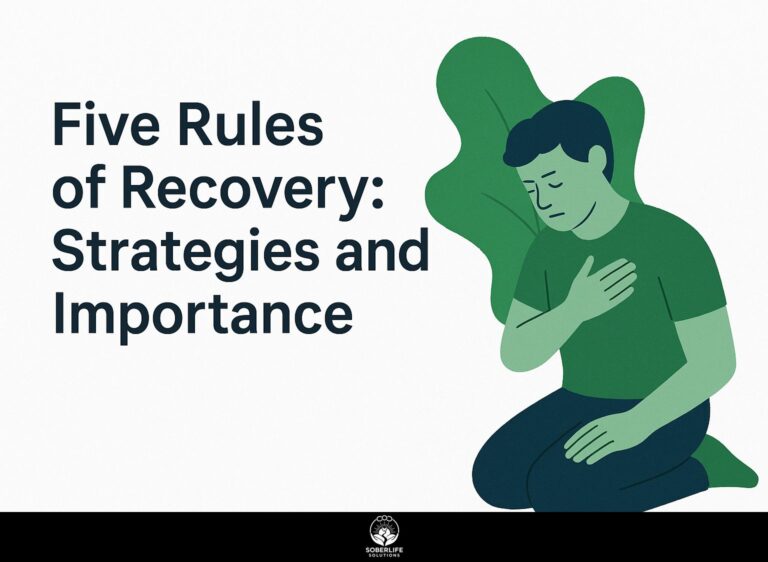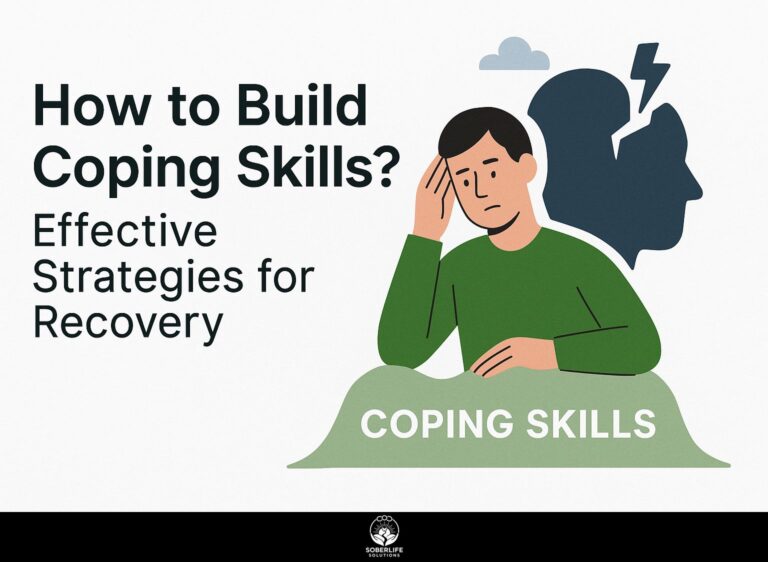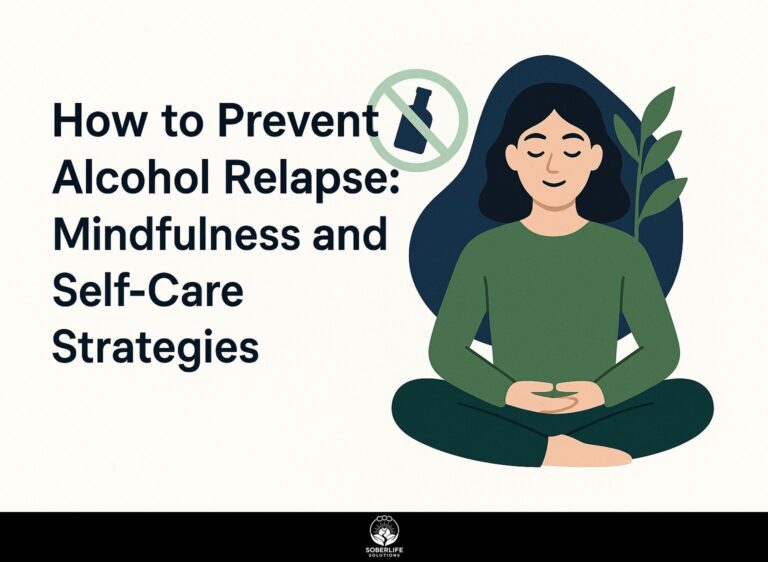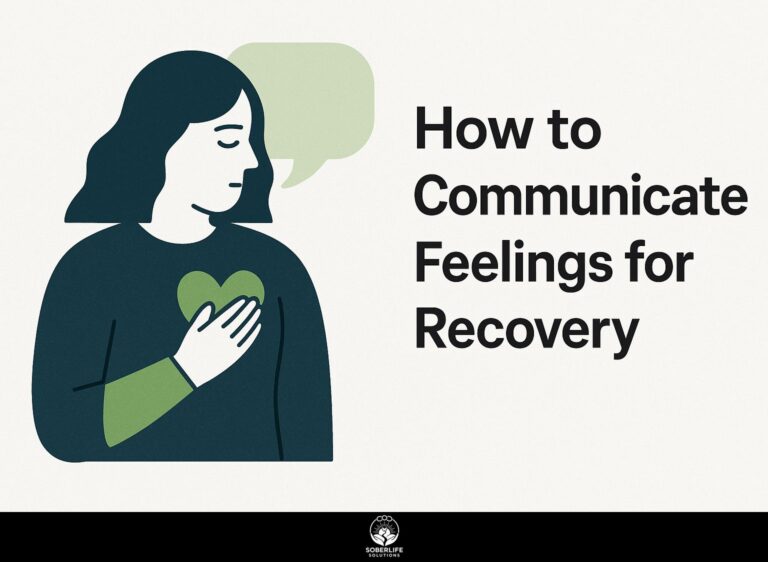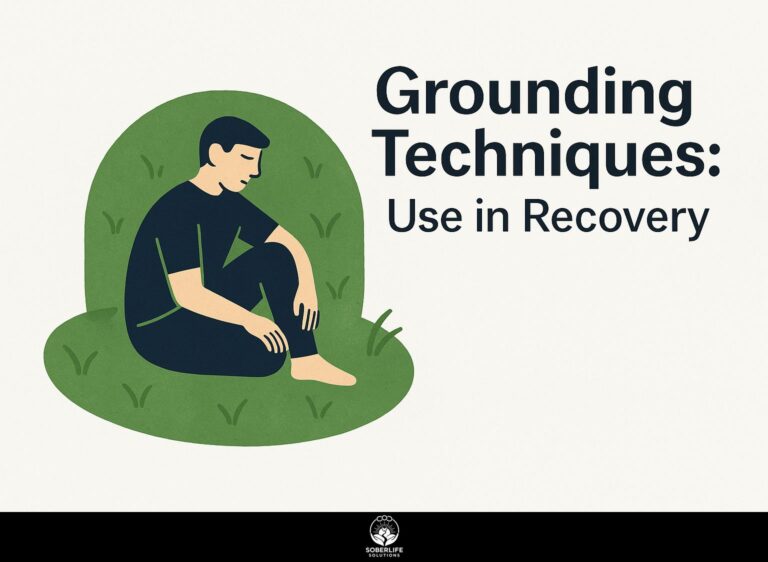Urge Surfing Techniques in Relapse Prevention
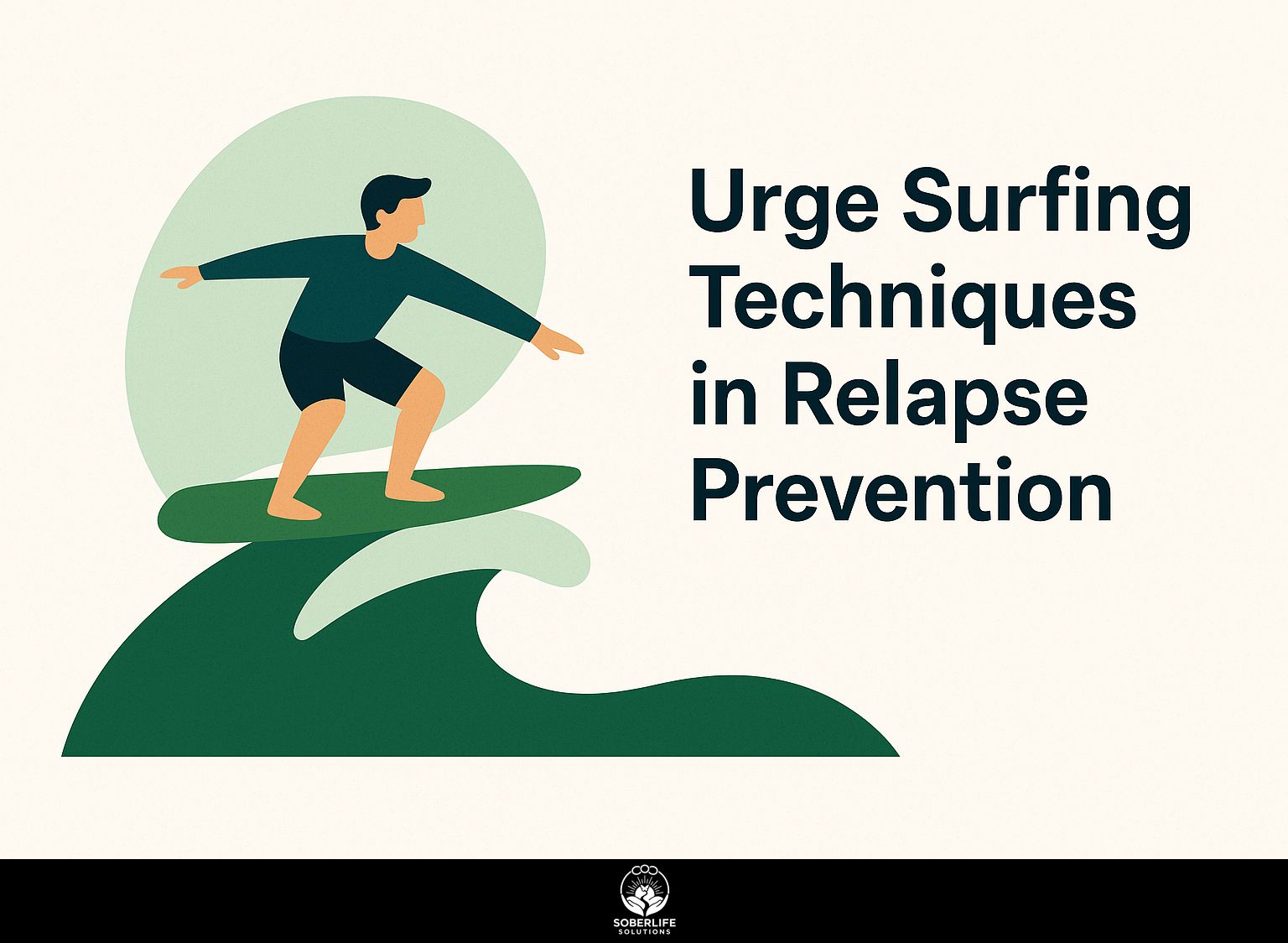
When cravings occur, learning Urge Surfing methods can significantly impact addiction recovery. By using mindfulness, people dealing with Substance Use Disorder can manage their urges without giving in to them. This article explains why Urge Surfing is important for avoiding relapse and provides practical strategies to help you stay on track. Learn how to handle stressful times and strengthen your ability to bounce back during your recovery.
Key Takeaways:
Definition and Purpose
Urge surfing involves recognizing cravings without giving into them, helping people handle their emotions well.
This method helps people recovering from substance use disorders by showing them how to see their cravings as short-lived and temporary.
For instance, during a craving, a person might focus on their breath for a few minutes, visualizing the urge as a wave that rises and falls. Adding mindfulness exercises, such as meditation or journaling, can improve this ability.
Urge surfing is often used with cognitive-behavioral therapy to help people become stronger and learn better ways to handle challenges, supporting lasting self-control.
Importance in Relapse Prevention
Urge surfing is important for preventing relapse, with research indicating that people who use these methods have a 40% lower chance of relapse.
This practice, rooted in Alan Marlatt’s research, involves recognizing urges as temporary sensations rather than compulsions. In fact, an overview of Marlatt’s Cognitive-Behavioral Model from ResearchGate provides a detailed explanation of these methods.
For example, when an urge strikes, individuals are encouraged to observe their feelings-acknowledging physical sensations or thoughts without acting on them. Techniques include:
- Deep breathing
- Mindfulness meditation
- Engaging in hobbies to distract the mind
Research shows that people who often practice urge surfing improve their ability to manage emotions and greatly cut down on cravings. Consistently using these strategies helps people handle recovery with more strength.
Understanding Urges
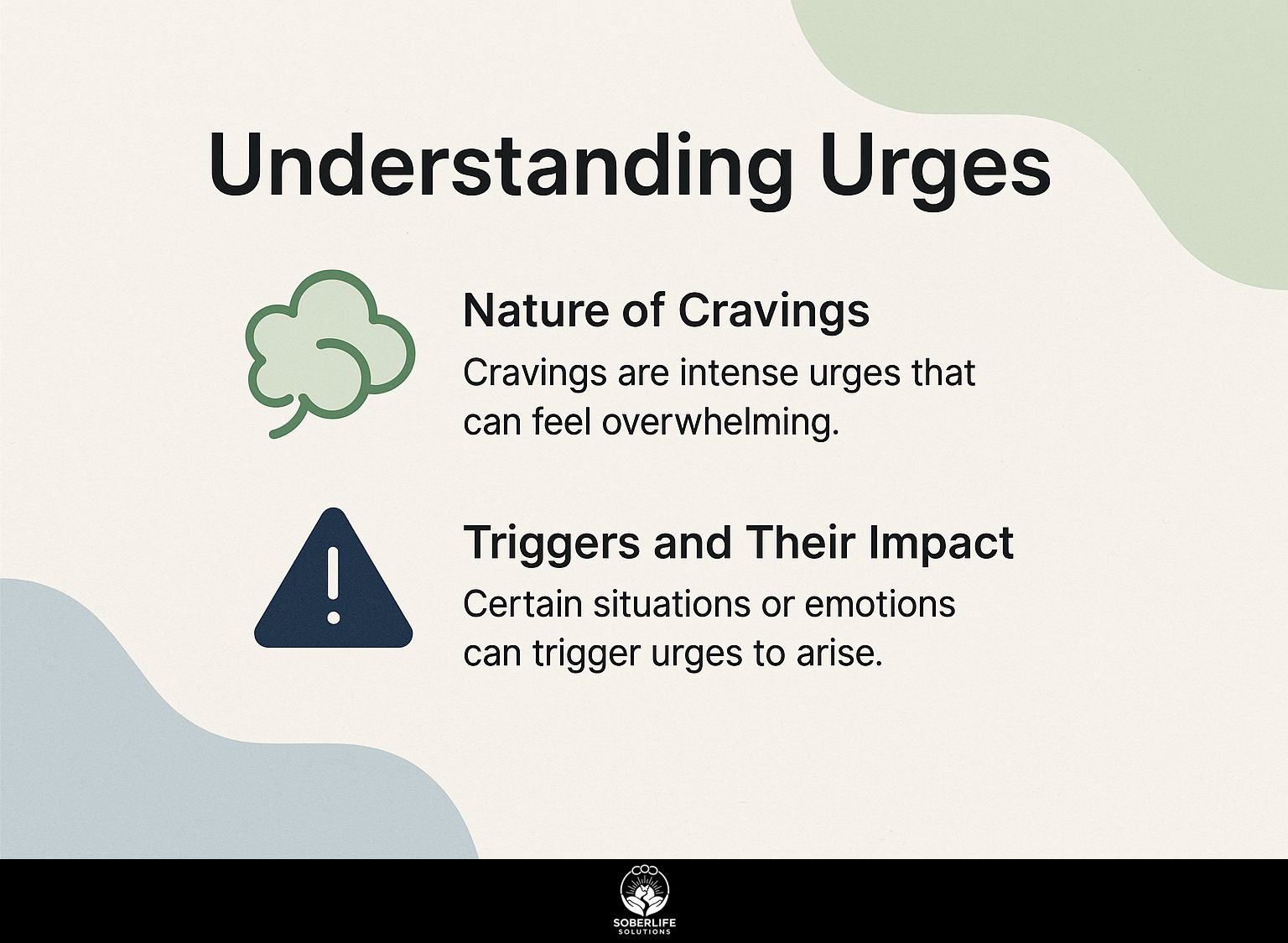
Knowing what causes urges is key to handling them well, as they come from different feelings and mental triggers. For an extensive analysis of this trend, our comprehensive study on Dialectical Behavior Therapy’s role in addiction recovery examines the underlying psychological factors.
Nature of Cravings
Cravings can manifest as intense urges to engage in substance use, often fueled by emotional states such as stress, anxiety, or depression.
These emotional triggers can lead to cravings when an individual feels overwhelmed or restless. For example, a person who is very stressed at work might want sugary snacks for a fast energy increase, while someone who is anxious might turn to alcohol for its calming effects.
Coping strategies include practicing mindfulness through deep breathing or meditation to reduce anxiety levels, maintaining a balanced diet to stabilize blood sugar, and engaging in physical activity to release endorphins. One effective approach involves understanding how to cope with emotional triggers (our [guide on emotional triggers and strategies](https://soberlifesolutions.com/cope-emotional-triggers-strategies/) offers six practical techniques).
The American Psychological Association (APA) has explored how emotions can trigger cravings, providing insights that knowing what causes cravings is key to handling them well in this recommended reading.
Triggers and Their Impact
Identifying triggers is critical; for instance, 70% of individuals report environmental cues as primary triggers for substance use cravings, as noted in a ScienceDaily article detailing why these cues make addiction particularly challenging.
Triggers can be categorized into environmental, emotional, and social stimuli. For example, walking past a bar may evoke cravings (environmental), while feelings of stress or sadness can trigger urges (emotional).
To identify personal triggers, keep a daily journal noting situations and feelings leading up to cravings. When you notice triggers, use coping methods. If a particular location makes you anxious, consider finding another way or asking friends for support when things get tough.
This approach helps people handle cravings well.
Urge Surfing Techniques
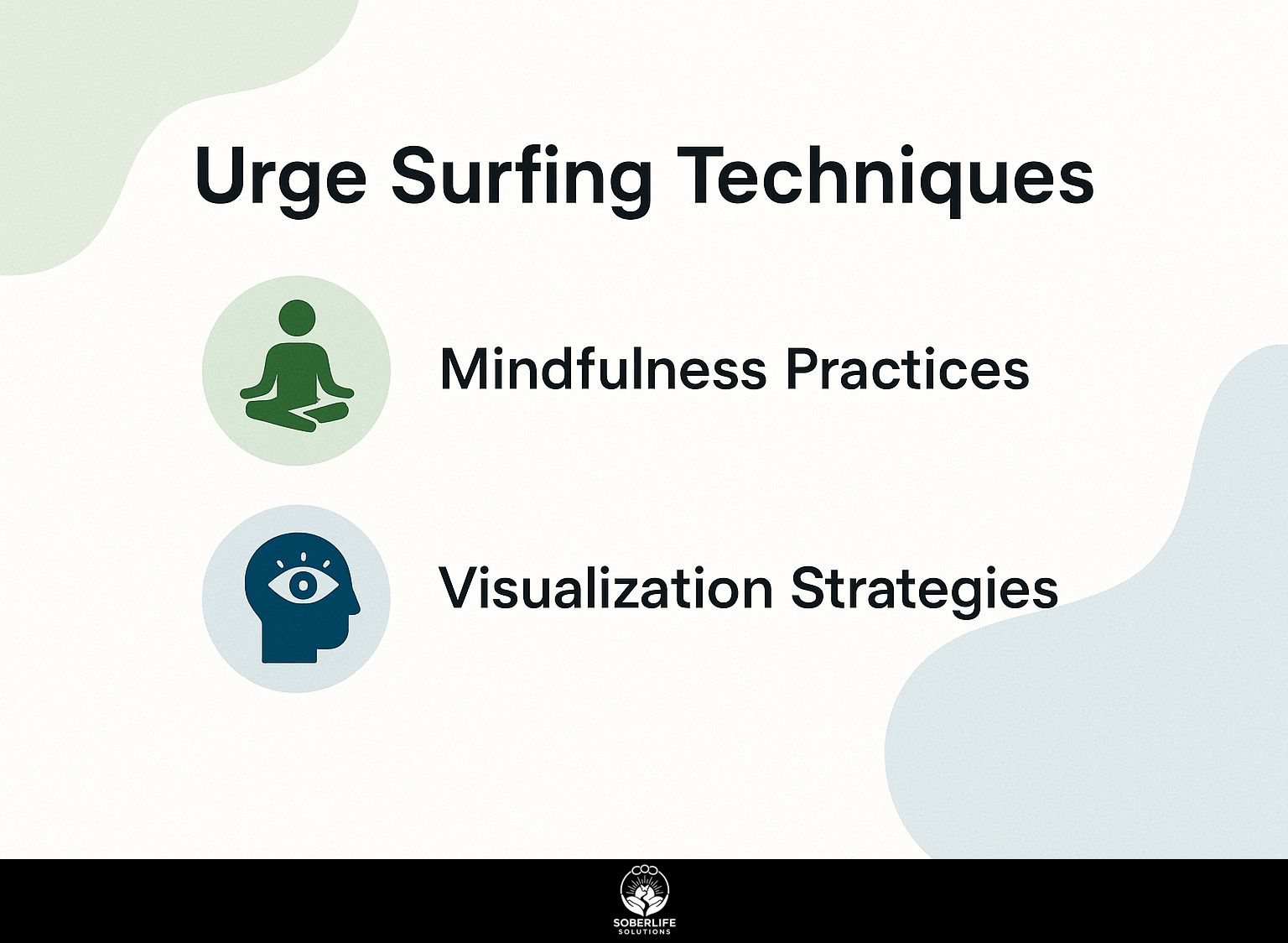
Using effective methods for urge surfing can greatly change how cravings feel, allowing a person to handle urges confidently. See also: Managing Cravings: Holistic Techniques in Recovery for additional strategies that complement urge surfing techniques.
Mindfulness Practices
Practicing mindfulness, like meditation and deep breathing exercises, can help lower emotional responses and increase awareness when you experience cravings.
An effective method is using guided meditation apps like Headspace or Calm, which provide sessions designed to help manage cravings. For instance, Headspace provides a 3-minute meditation designed to anchor your thoughts and reduce anxiety.
Try deep breathing exercises: inhale for a count of four, hold for four, then exhale for four, repeating this cycle until you feel grounded.
Practice these techniques regularly, especially during high-stress moments, to build resilience against emotional triggers.
Visualization Strategies
Visualization techniques can help individuals mentally prepare for cravings, potentially reducing their intensity and impact.
One effective exercise involves vividly imagining yourself overcoming a craving. Imagine the situation clearly: describe where you are, how you feel, and what you do to fight back.
A case study from a wellness coach highlights how a client, using this method, successfully managed sugar cravings by envisioning herself choosing a healthy snack instead of dessert. She reported a significant decrease in cravings after consistent practice.
Tools such as apps for guided visualization or meditation can make this process smoother, helping you include visualization in your daily schedule.
Implementing Urge Surfing
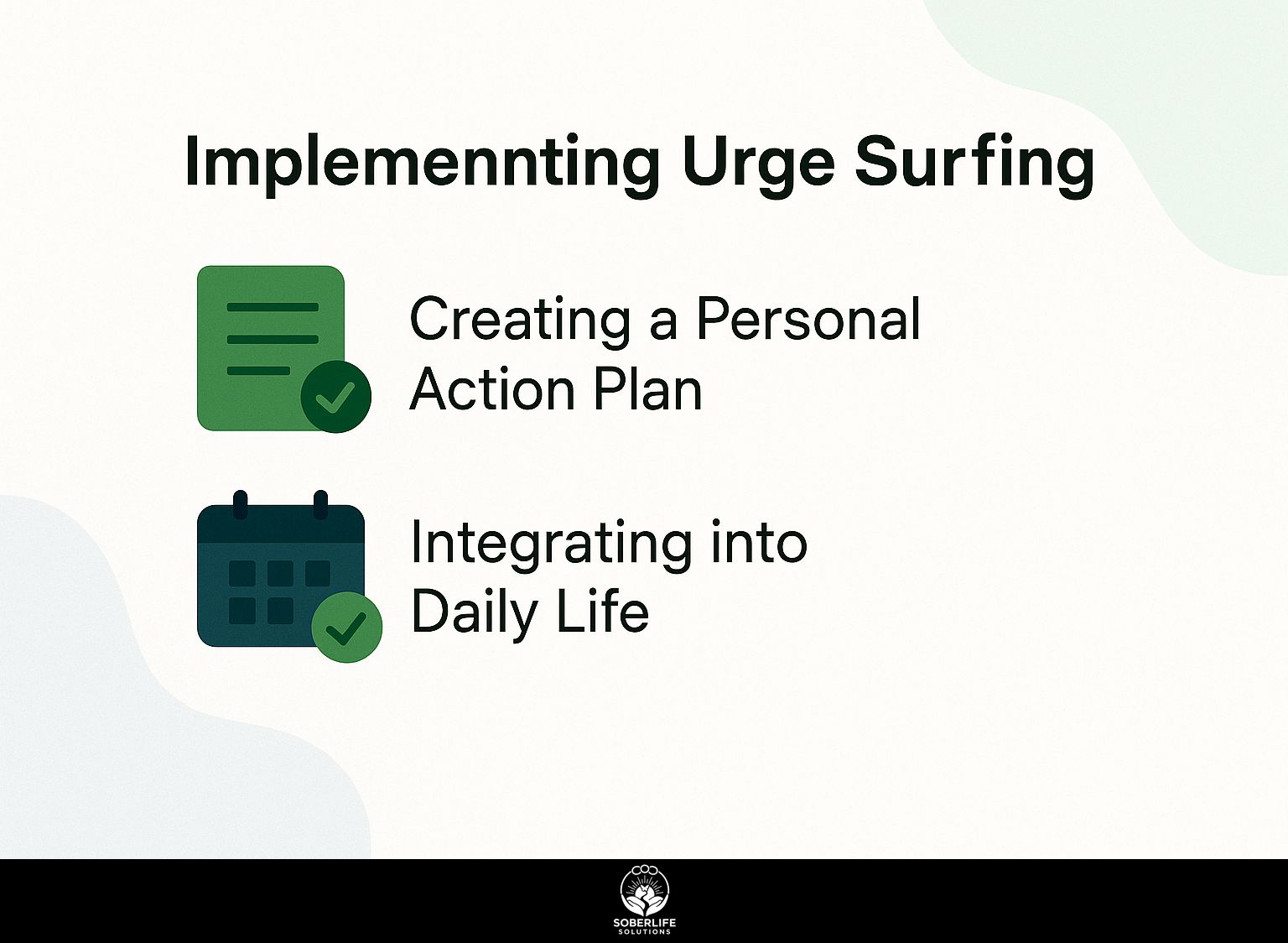
Successfully using urge surfing in daily life needs a clear personal plan based on one’s own triggers and ways to handle them.
Creating a Personal Action Plan
A personal action plan should outline specific steps individuals will take when experiencing cravings, increasing the likelihood of success.
To create an effective action plan, start by identifying your triggers. For example, if stress makes you want certain foods, try doing a mindfulness exercise like deep breathing or meditation.
Next, list specific coping strategies:
- Calling a support friend
- Engaging in a physical activity
- Writing in a journal
These strategies can offer immediate relief. Create a routine for these activities to help them become regular habits. Look at your plan often and change it as needed, so you can make it better based on what suits you best.
Integrating into Daily Life
Practicing urge surfing every day can greatly increase emotional strength, helping people handle tough situations.
To use urge surfing well, start by setting daily alerts for mindfulness exercises. These can include deep breathing or meditation to help you recognize moments of craving.
Establish a journaling routine to document cravings and your emotional responses. For example, at the end of each day, write down what triggered your urges and how you responded. This reflection helps identify patterns and strengthens your coping strategies.
Use apps like Headspace for meditation and Day One for journaling to make these activities easier and more structured.
Benefits of Urge Surfing
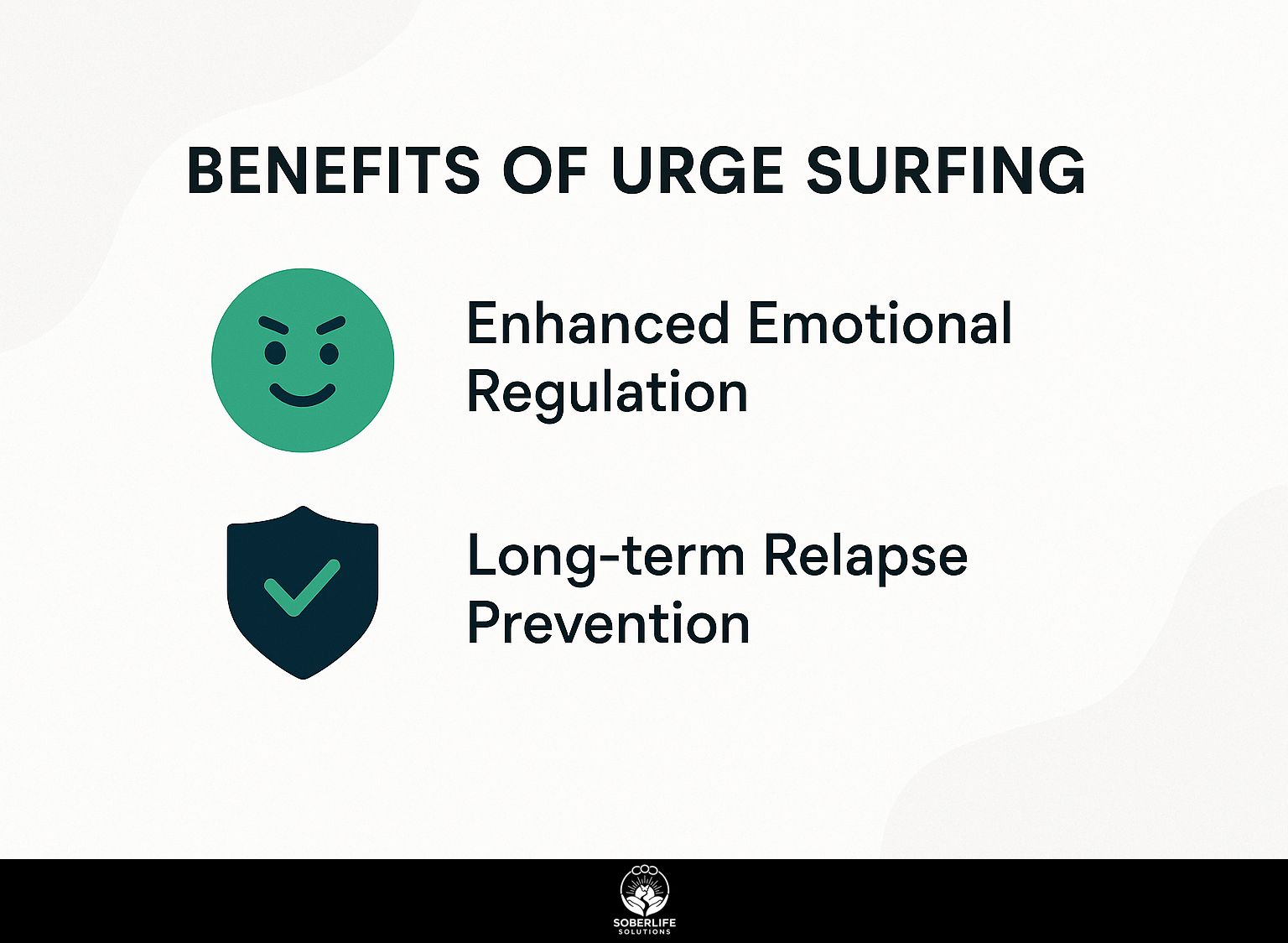
The advantages of urge surfing go beyond just easing cravings quickly. It helps control emotions better and supports lasting recovery success. Related insight: Managing Cravings: Holistic Techniques in Recovery offers complementary strategies that enhance urge surfing practices.
Enhanced Emotional Regulation
Practicing urge surfing techniques can help improve emotional control, resulting in a 30% better management of negative emotions.
For example, studies show that individuals who engage in urge surfing can better withstand cravings associated with stress or anxiety.
This technique involves acknowledging the urge without acting on it, allowing feelings to dissipate over time. Tools like mindfulness apps, such as Headspace or Calm, can help guide users through the practice.
Writing a diary to record cravings and feelings can help identify habits and how well strategies work. Over time, these strategies contribute to greater emotional resilience, enhancing overall wellbeing.
Long-term Relapse Prevention
Long-term engagement with urge surfing techniques can significantly reduce the risk of relapse, with a reported 50% decrease in relapse rates among consistent practitioners.
This method involves acknowledging urges without acting on them, allowing time for the craving to pass. Practitioners often use mindfulness techniques, such as breathing exercises or visualization, to focus on their feelings during a craving episode.
For example, if you feel a strong desire to do something, you can set a timer for 15 minutes and spend that time doing an activity that helps you stay present, such as writing in a journal or going for a walk.
By regularly using these methods, people can handle current cravings and also strengthen their ability to deal with triggers later on.
Challenges and Solutions
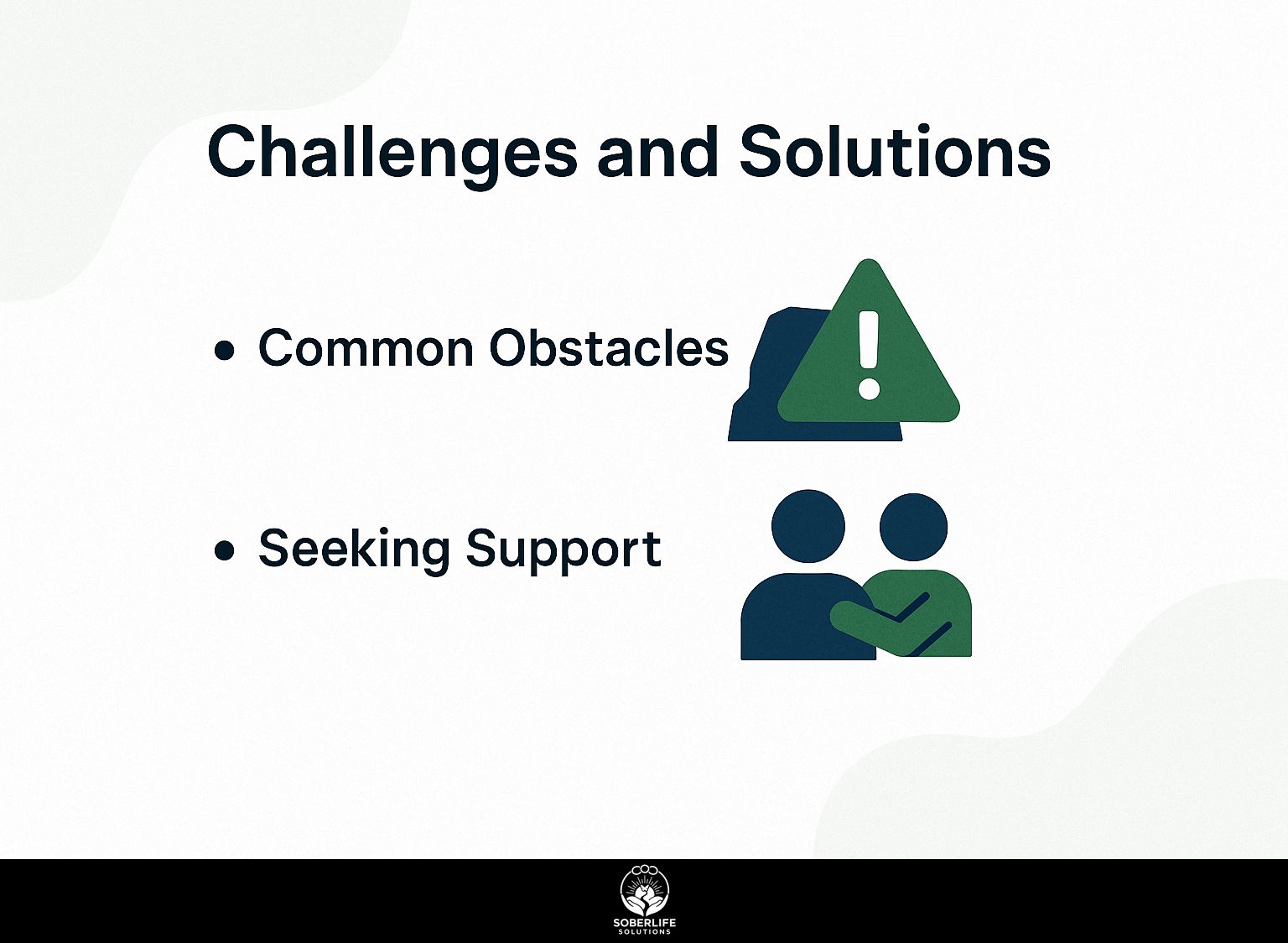
Even though urge surfing is helpful, people practicing it might face difficulties that need careful planning to solve. Developing self-awareness can significantly aid in this process, as it enables individuals to better recognize and manage their triggers. For more insights, check out this article on developing self-awareness in addiction recovery.
Common Obstacles
Common obstacles to effective urge surfing include lack of motivation, difficulty in identifying triggers, and overwhelming emotional states.
To overcome these challenges, consider these strategies:
- Build a support system by connecting with friends or joining a local recovery group, which can provide accountability and encouragement.
- Write in a journal to note what sets off your reactions; this activity helps you see trends and come up with specific responses.
- Practice mindfulness techniques, such as deep breathing or meditation, to manage emotional states.
These tools help you deal with urges more clearly and strongly, greatly improving your ability to manage them.
Seeking Support
Creating a support system can make urge surfing more successful by offering accountability and motivation when things get tough.
To build a strong support system, consider engaging with local support groups like Alcoholics Anonymous (AA) or Narcotics Anonymous (NA), which offer in-person connections and structured support.
Groups like SMART Recovery and Reddit’s r/stopdrinking provide helpful support from people and practical tips.
Reach out to trusted friends and family for emotional support-regular check-ins or shared activities can reinforce your commitment to recovery.
Apps like Sober Grid can help you meet others who are going through similar experiences, creating a feeling of community.
Frequently Asked Questions
What are Urge Surfing Techniques in Relapse Prevention?
Urge Surfing Techniques in Relapse Prevention are coping strategies used to manage and overcome strong urges or cravings to engage in addictive behaviors. These techniques involve acknowledging and accepting the urge, rather than trying to resist or suppress it.
How do Urge Surfing Techniques work for Relapse Prevention?
Urge Surfing Techniques help individuals to develop a different response to their urges, by learning to observe and ride the wave of the urge without acting on it. This helps people manage their urges and stop going back to old habits.
What are some examples of Urge Surfing Techniques in Relapse Prevention?
Some examples of Urge Surfing Techniques include deep breathing, mindfulness meditation, distraction techniques, and positive self-talk. These techniques help individuals to stay present in the moment and manage their urges in a healthy way.
Can Urge Surfing Techniques be used for all types of addiction?
Yes, Urge Surfing Techniques can be applied to a variety of addictions, including substance abuse, gambling, and even unhealthy behaviors such as binge eating. These techniques can help individuals to manage cravings and prevent relapse in any type of addictive behavior.
Do Urge Surfing Methods Help Everyone Avoid Relapse?
Urge Surfing Techniques have shown success for many people, but they might not be effective for everyone. People should find the methods that suit them best and ask for more help if needed.
How can I learn more about Urge Surfing Techniques in Relapse Prevention?
There are many resources available, such as therapy, support groups, and online articles, that can provide more information and guidance on Urge Surfing Techniques. It’s important to continue learning and practicing these techniques in order to successfully prevent relapse.

